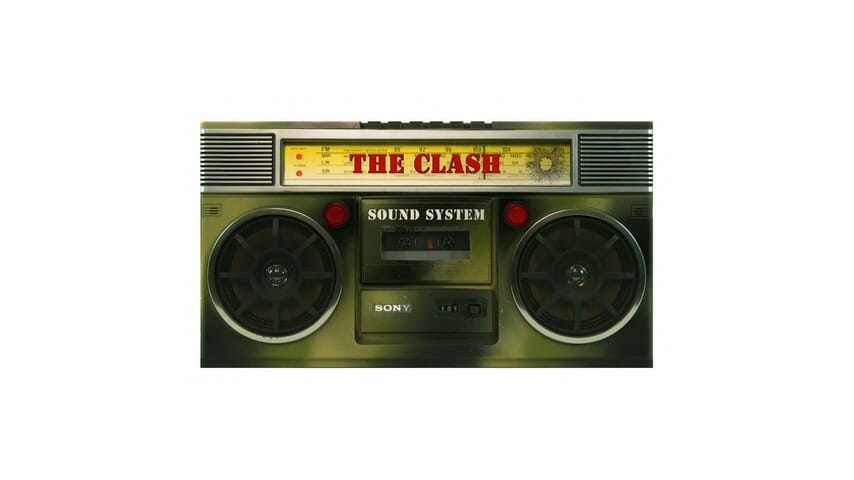The Clash: Sound System Box Set

On a snowy morning in January 1980, I was restlessly searching the new release racks of a suburban record store in Vancouver, Canada, looking for something a little more challenging than the newest albums from Bob Seger, Boz Scaggs or Pablo Cruise. The ‘70s were over; progressive rock and disco were dead, while artists from the decade before—The Stones, Dylan, Paul McCartney, James Taylor and Paul Simon—still continued to dominate the airwaves and shelf space at music retail outlets. Bob Marley and the Talking Heads were the only new artists I thought worth listening to, but I already had their most recent albums, Survival and Fear of Music, and was about to leave the record store with the kind of intolerant disgust only a discontented 17-year-old could muster, when a grainy black-and-white image of a musician smashing his bass guitar on stage caught my eye. That photograph, out of focus, yet vibrating with energy and angst, expressed all of the intolerance, pent up energy and rage that filled me every day when I woke up in the morning. That image, along with the banner above the record displaying “The Clash: the only band that matters,” willed me to pick up a copy, pay for it (although the picture on the cover almost demanded that I attempt to steal the record instead) and run home to listen to London Calling, one of the few albums that can truly be said to have changed my life and the way I hear and enjoy music. It’s an album that never gets old, and somehow continues to become better and more relevant every time I hear it.
If you never had a chance to experience The Clash while they were in full swing, it may be a little difficult to understand what all the fuss was about. So much has been written about the punk explosion that first erupted in England in late 1976; the names of the players—the Sex Pistols, The Damned, The Slits—were as confrontational as the music they played, but right from the beginning there was something that set The Clash apart. They were serious and on a mission from the get-go. Sure, there were some songs of happy destruction, but the band never went in for the nihilism that many of the other early punk bands indulged in. The Clash were all about social and cultural change, and even though their first two albums, The Clash and Give ‘em Enough Rope, didn’t stray too far from the loud, crashing, DIY ethics that distinguish early punk, there was something different about them even then. Perhaps it was the intensity of their lyrics or the breadth of their musicality. Covers of “I Fought the Law” and Junior Murvin’s “Police and Thieves” gave early indications of how far they were willing to push their musical vision and commit themselves to radical social change.
The Clash were never concerned with labels. Like The Beatles a decade and a half earlier, their sound changed and enlarged so many times that by the end of the band’s run, they were unrecognizable as the simple punk outfit they started out as.
With the double LP London Calling, The Clash began to stretch out and bring aspects of jazz, funk, reggae and classic rock into their sound and a predictable backlash ensued. Punk purists went after the band in the same way that the hardcore folkies decried Dylan when he went electric, but it was too late. The Clash’s new richer sound attracted a huge international audience, and by the time Sandinista! was released in Christmas 1980, the band had traveled so far from their original sound that it took many people decades to catch up.
To say that Sandinista! was ahead of its time is an understatement. In addition to the world music sounds that they’d begun to incorporate into the songs on London Calling, new tracks such as “The Magnificent Seven,” “The Call Up” and “Somebody Got Murdered” explored and exploited funk, hip hop and old-school rap rhythms to great effect. Underappreciated when it was first released, Sandinista! showcased a band at the peak of its innovative powers. With 36 new songs spread over three albums, the sheer size and intensity of the work was intimidating for many people in the band’s core audience. Still, listening through the newly remastered Sandinista!, it’s clear that the album has stood the test of time and sounds even better today than it did 33 years ago when it was first released.
-

-

-

-

-

-

-

-

-

-

-

-

-

-

-

-

-

-

-

-

-

-

-

-

-

-

-

-

-

-

-

-

-

-

-

-

-

-

-

-








































